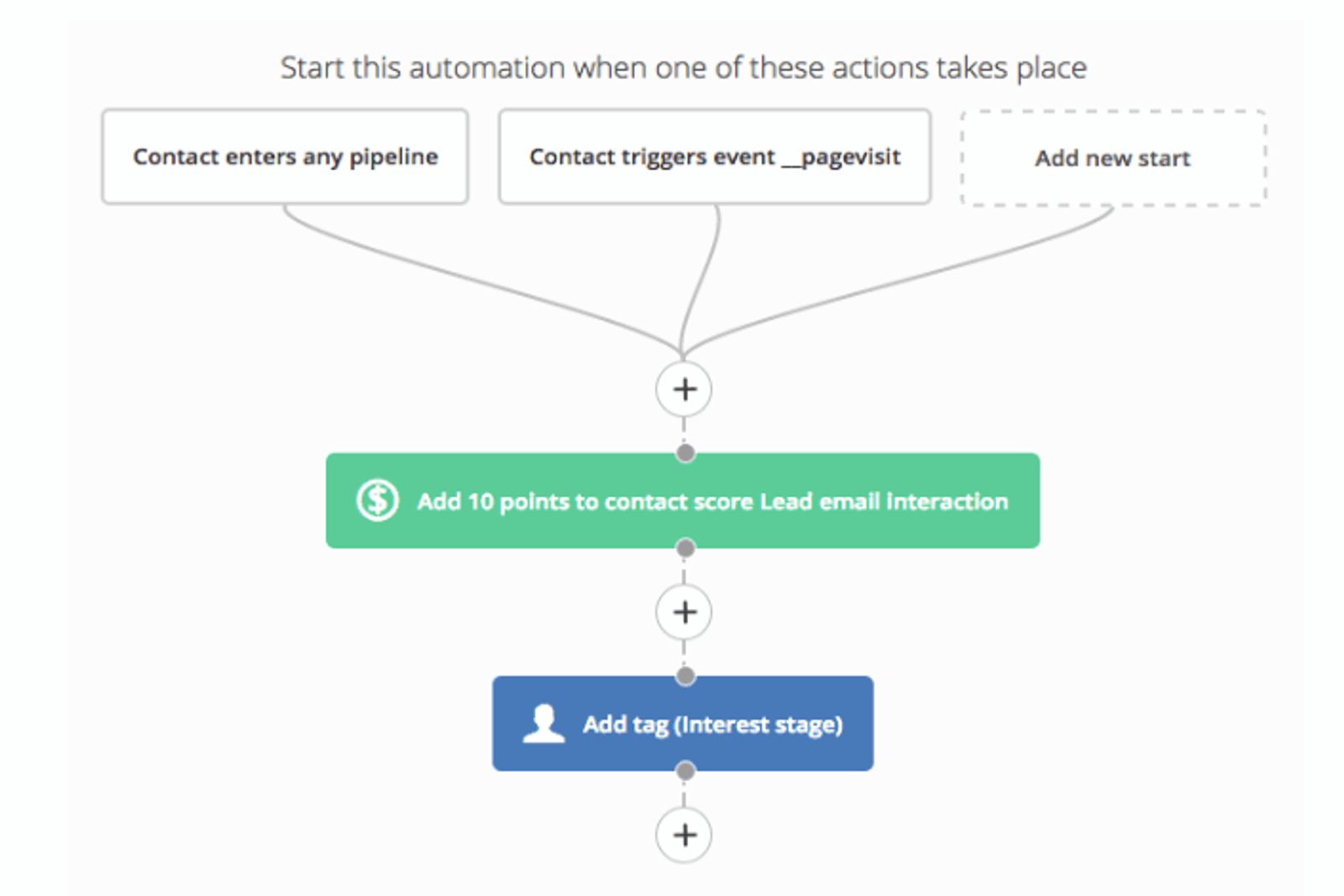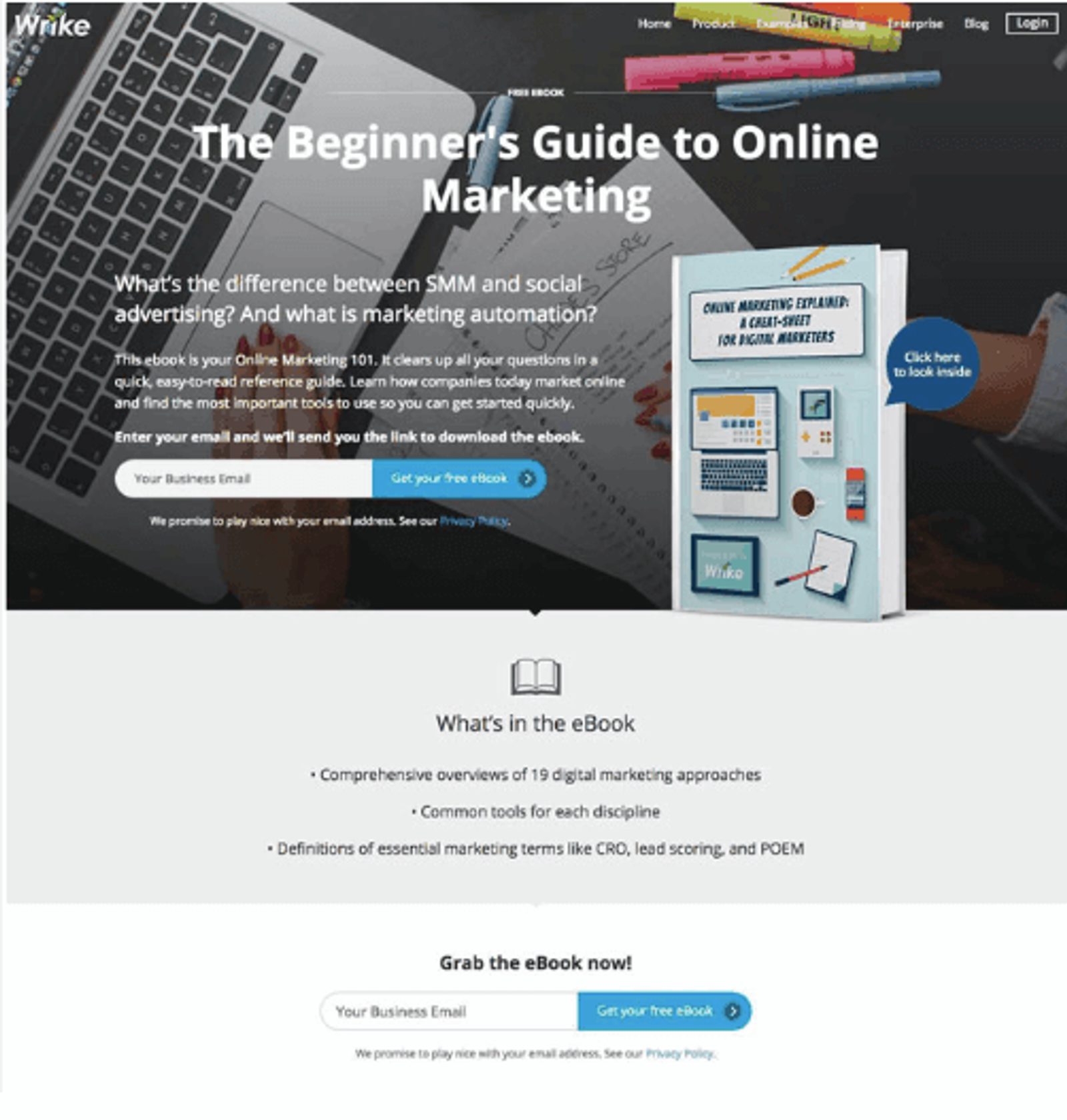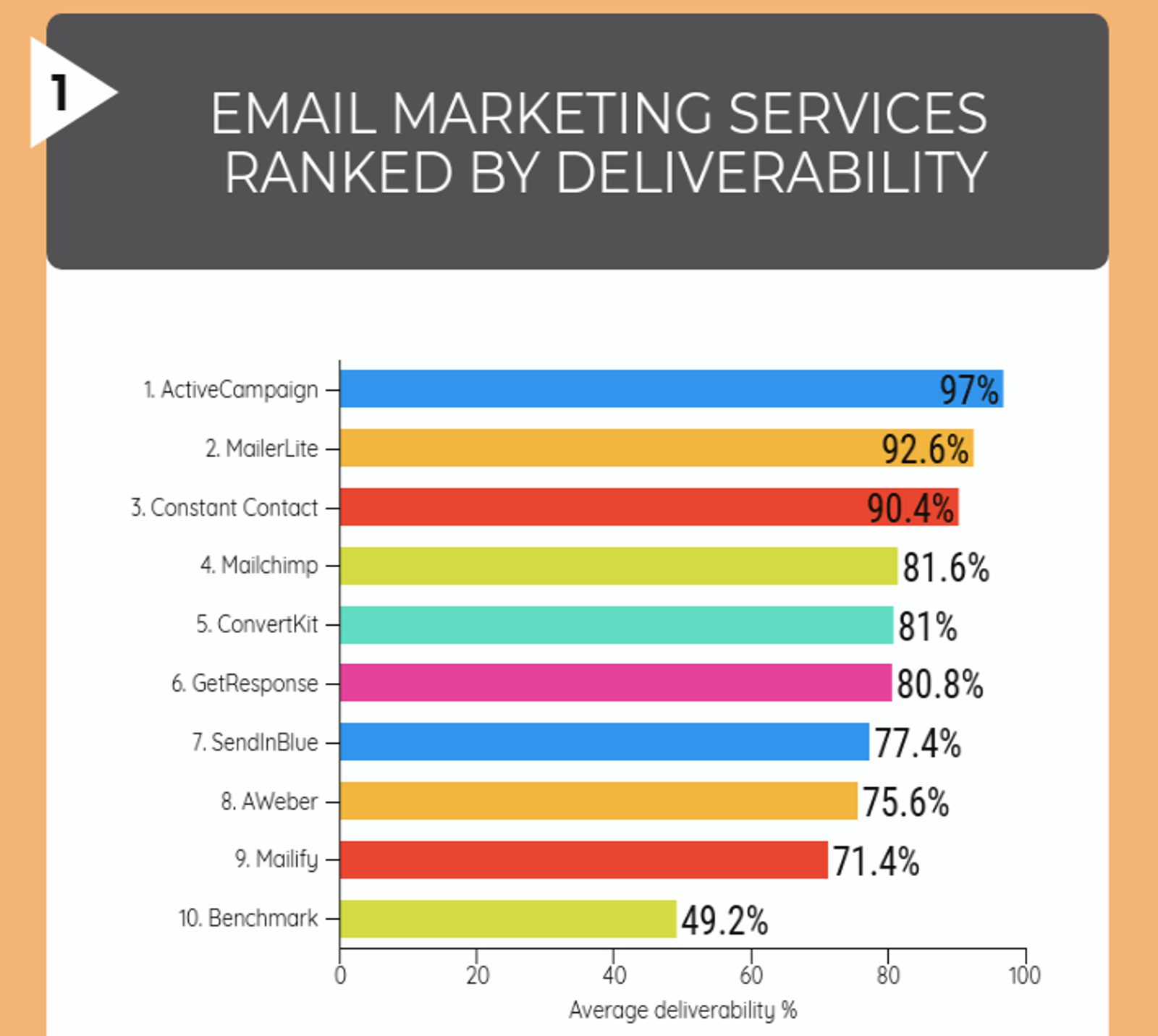Each time you reach out to your contacts, you are able to turn their attention to you and your business. This isn’t to be taken lightly because you are taking their limited time and attention off important things in their life — their friends and family, work, and recreation.To show respect for your contact's time, each message needs to be as relevant, important, and valuable as possible.But, what is important, relevant, and valuable changes as a contact goes through the stages of the customer lifecycle.Their interests and priorities shift dramatically as they move from curious prospects to repeat-purchase evangelists. What is appropriate and helpful for one stage, might be completely irrelevant and unwelcome for another stage.The shift toward marketing automation has made perfectly-timed emails possible:
- Using a feature like Site Tracking, you are able to assume their interest and track patterns of behavior.
- Using dynamic segmentation, you can ensure that contacts are grouped appropriately for targeted messaging.
- Using automations, you can react to a contact’s behavior.
- Using a lead scoring system, you are able to assume and measure a contact’s level of engagement.

Here's a look at lead scoring within ActiveCampaign.
What may be less clear, is what email messages you should be sending at each stage to shorten your sales cycle and create satisfied repeat customers who spread the word about your company.What follows are suggested email messages you could send during each stage of the customer lifecycle. By creating a segmented follow-up strategy, you can deliver a variety of stage-targeted messages during each phase.Try it now, for free
Awareness Stage
- Welcome email. Welcome emails are opened more than any other type of email, have much higher clickthrough rates, and have proven to increase long-term revenue.It’s a quick win for your company — easy to set up and a golden opportunity to get an important message in front of the majority of your contacts.
- Follow us on social media. While email is the gold standard, social media gives you another opportunity to increase your contacts awareness and engagement in an unobtrusive way.
- Introduce research resources. Make them aware of your blog, your help docs, your white papers and other content repositories you’ve produced. This way you can nudge them into the research stage using your resources.
Aren’t you curious what our welcome email looks like?
Research Stage
- Learn from others experiences
- Discover solutions we’d have never considered
- Research nearly everything about a company before deciding to purchase from them.

Wrike offers educational value like this ebook to attract leads.
Once you’ve got their attention, you can offer them something of higher-value to incentivize them to opt-in.Emails to send during the research stage:- "What are you interested in?" Early on in the research phase, find a way to identify or, at least, narrow down your contact’s interest. If you can nail that down, you can deliver much more targeted messages and more relevant content.One way to do this is to offer a variety of content in a single email and then use link tracking to see which content they chose to view. At this stage, you probably can’t deliver too much content (assuming it is high-quality, targeted content).
- Content in various formats. Webinars, white papers, instructional videos, white papers, ebooks, and slide decks… there is no shortage of ways to publish content these days.All these formats exist because people have different preferences for how they choose to consume information. Don’t unnecessarily limit your content to a couple of formats when you’ll isolate your content from certain groups of contacts.
- Content that explains their problem. By describing exactly what the customer is going through, you convey that you understand them and where they are at. This empathetic message serves as the foundation for future content.If a contact feels that you “get it” they’ll be more likely to pay attention. It’s the difference between getting advice from someone you trust has “been there and done that” versus someone who just likes to give people their opinion.

An ActiveCampaign blog headline that offers a solution.
- Content that gives tactical advice and actionable insights. When we are researching a problem, we are generally looking for a solution and not just reading for fun. The best kind of content is usually something we can learn from and use.Fluff pieces won’t help anyone but if you can deliver solid, usable advice your contacts will appreciate hearing from you… and that’s exactly what you want so that when you start marketing more aggressively, they are receptive.
- Content that points to your solution and explains why it’s the best solution. In the late stages of the research stage, you’ll want to begin working some marketing messages into your content.You don’t want that to be the focus of the content, because that will turn them off, but they are naturally moving toward comparison so you want to begin educating them on the advantages of your company and solution.
Comparison Stage

(Source: Email Tool Tester)Ideally, you’d like to influence the conversation that is taking place in their mind as they look at you and look at everyone else. You can do quite a bit to ensure this comparison is a favorable one.In the research stage, you were sending helpful information to build trust and establish your company as an authority worth listening to.At this next stage, you will want to turn up the heat by delivering content that is more marketing oriented. You’ll want to make sure your contact knows what makes your solution unique, why it’s a good value, and point out why it might be a better solution for them than other options.If your company has a sales team, you’d want to aggressively pursue getting a meeting with them so that you can speak one-on-one about their goals and concerns and point out how your solutions can help.These emails can be triggered by lead score assuming you’ve designed your lead scoring system to look for indications of comparison shopping.Emails to send during the comparison stage:
- "Have time to talk?" A short invitation to set up a time to talk is a proven method of moving the relationship to the next level.While marketing automation can identify interests, there’s nothing like a real-time back and forth to nail down exactly what a leads hopes and fears are surrounding your solution.
- "How can I help?" If they aren’t open to one-on-one, they might be open to someone helping them. If you can give them some kind of specific help, the better.
- "Here’s a buyer’s guide." Content that compares solutions gives you an opportunity to put your opinion of the competitive landscape in front of your contacts.
- "Here’s what makes us different (and better)." Sometimes you just need to come out and say exactly what you mean.
- "Here’s why our solution is perfect for you." By this point in the relationship, you’ve probably gathered some decent data on your prospect so you can speak to them very personally about what they are looking for and why. You can explain exactly how your solution meets their needs.
Purchase Stage

Stand out among the crowd.
Differentiate yourself with the experience people have when they become customers. You might make a very, very similar widget to your competitors, but you can provide an entirely different (and better) experience of purchasing that widget.Help them use your product. Give them resources that ensure they'll be able to successfully solve their problem with your solution.Emails to send during the purchase stage:- "Thank you and welcome." Welcoming a new customer gives you an opportunity to get an important message in front of them. A sincere expression of what it means to you that they trusted you with a purchase is a great way to start a new company-provider relationship.
- "Everything okay?" Check in with your new customer so you can be sure that everything is going okay so far. If it’s not, you can proactively address their concern. If you do this right, you might actually improve the relationship by demonstrating your awesome customer support.
- Product use guidance (product consumption). Customers will get drastically different results from your product because they will use it differently. Obviously, the customers who never use it will experience very little value and those customers who use your product often and in intelligent ways will experience tremendous value.You want to guide all your customers toward the most intelligent uses of your solution so that they all experience as much value as possible. This will help create raving fans and minimize the amount of “sucks, didn’t use it” reviews you receive.
- Best practices and pro-tips. Take your guidance to the next level with advanced tips you’ve gleaned from the top 1% of your users.
- "How did it go?" After they’ve had a chance to settle in with your solution and get up and going, check-in and see what they think. You’ll again have an opportunity to proactively identify problem cases and you’ll also be able to identify your thrilled customers.
Retention Stage

Your product or their product?
This is where your customer onboarding experience makes its glorious debut helping customers to get up and going with your product as fast as possible and produce the best results possible.Your onboarding’s goal is to help the customer get as much value out of your product as possible while overcoming obstacles that have proven to hold people back in the past.Emails to send during the retention stage:- Support resources. Everyone in your industry might be making a very similar widget but it’s doubtful that everyone is providing the same level of customer support.Customer support is a major point of differentiation and it’s what matters most to many consumers. Make sure that your customer is aware of your support resources and make it very easy for them to use them.
- Q & A convo. Start a conversation to build the relationship and give them a chance to voice any lingering concerns.
- Newsletter. Your newsletter is a chance to notify your customer of product updates, company updates, and continue to strengthen the relationship.Obviously, you want to make these messages as light-hearted and interesting as possible. A dry, corporate newsletter will quickly end up in the spam folder and so do more hurt than help.
Awareness Stage

“Word of mouth” marketing is the “holy grail” of marketing because it has the highest conversion rate and the best ROI. Getting there requires all the moving parts in your company to work together perfectly to create a product and company experience worth talking about with friends, family, and followers.Emails to send during the awareness stage:
- "Are you satisfied?" Try to nail your contact down on whether they are happy or not. If they are, you can send them another message asking them to refer you to others.
- "Would you refer us?" Identify your customers who are evangelists. This select group of contacts are out there promoting your company. You should thank them, reward them, and give them special treatment.
- "Here’s an incentive to refer us." Some people might need a nudge to make a recommendation. The new wave of mattress manufacturers, like Leesa and Casper, are leveraging referral bonuses and getting fantastic results.
- "Please give us feedback." Ask your customers to give you feedback. Your happy customers will give you testimonials you can use in your marketing and your dissatisfied customers will help you identify the weak spots that need improvement. Either way, this is extremely valuable.
By delivering the right message at the right time (with the right email templates), you are able to influence your contacts as they move through the stages of the customer lifecycle. Each email you send is a chance to strengthen and progress the relationship. Want to squeeze even more customer lifetime value out of your hard earned relationships? Explore these free welcome video script templates by Bonjoro.









